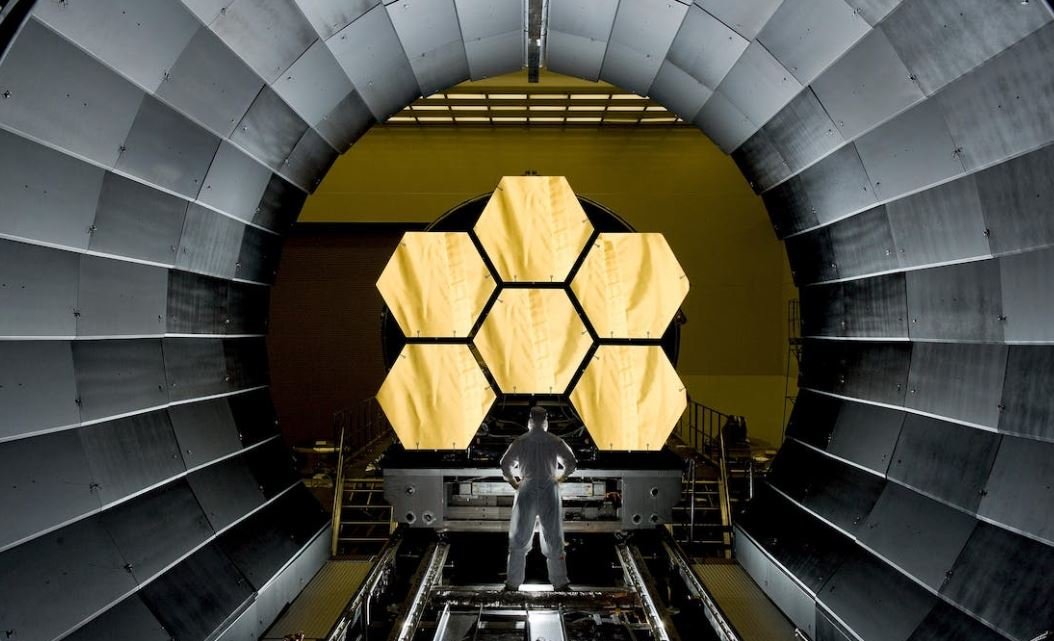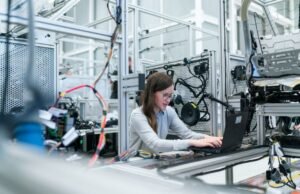How AI Image Detectors Work
Artificial Intelligence (AI) image detectors have revolutionized the way computers interpret and process images, enabling machines to identify objects, people, and scenes with remarkable accuracy. In this article, we will delve into how these sophisticated systems work and their applications in various fields.
Key Takeaways:
- AI image detectors use deep learning algorithms to analyze and interpret visual data.
- These systems consist of neural networks that learn from vast amounts of labeled images.
- Object detection, facial recognition, and scene understanding are among the common applications of AI image detectors.
Understanding AI Image Detectors
AI image detectors are built on the foundation of deep learning, a machine learning technique that exploits neural networks with multiple layers to derive meaning from data. These networks, inspired by our own biological neural networks, can sift through extensive datasets to identify patterns and make predictions about new data.
When it comes to images, AI detectors break them down into smaller pieces called “pixels.” Each pixel contains valuable information about color, intensity, and position. By analyzing and processing these pixels, **AI image detectors can extract meaningful features and detect objects or patterns within an image**. This process is often referred to as object recognition or image classification.
In order to train AI image detectors, an extensive labeled dataset is utilized. This dataset consists of images where each object or pattern of interest is manually labeled. The labeled examples serve as a **reference for the AI system to learn and associate specific visual features with corresponding labels**. The training process involves adjusting the parameters of the neural network until it achieves a high level of accuracy in recognizing the desired objects or patterns.
The Applications of AI Image Detectors
AI image detectors have found applications in various fields, enriching industries and enhancing our daily lives. Here are some notable examples:
- **Object Detection**: AI detectors are employed for object recognition in autonomous vehicles, surveillance systems, and manufacturing processes.
- **Facial Recognition**: This technology is used for identity verification, access control, and personalized user experiences in smartphones, security systems, and social media platforms.
- **Scene Understanding**: AI image detectors aid in understanding complex scenes, enabling applications like visual search, augmented reality, and content moderation on social media platforms.
Interesting Data Points
Here are three intriguing data points related to AI image detectors:
| Data Point | Description |
|---|---|
| 1 | The object detection model YOLO (You Only Look Once) can process approximately 45 frames per second, making it suitable for real-time applications. |
| 2 | In 2015, the error rate of AI image detectors in identifying objects dropped to just 5%, surpassing human accuracy for the first time. |
| 3 | Facebook’s DeepFace achieves a near-human level accuracy of 97%, making it one of the most powerful facial recognition systems. |
Conclusion
AI image detectors have revolutionized the way computers interpret visual information, enabling accurate object detection, facial recognition, and scene understanding. By leveraging deep learning algorithms, these systems can process vast amounts of data to identify patterns and make meaningful associations. With continuous advancements in AI, we can expect even more remarkable applications of image detectors in the future.

Common Misconceptions
Misconception: AI Image Detectors Can Recognize Everything
One common misconception about AI image detectors is that they are able to recognize everything accurately. However, these detectors have limitations and can only identify objects they have been trained on.
- AI image detectors rely on extensive training with specific datasets.
- They may struggle with unfamiliar or rare objects that are not part of their training data.
- Accuracy can be affected when objects are not clearly defined or partially obscured.
Misconception: AI Image Detectors Understand Context
Another misconception is that AI image detectors have the ability to understand context and interpret images the way humans do. In reality, they primarily rely on visual features and patterns to make predictions.
- AI image detectors analyze images based on pixel values and patterns rather than context.
- They lack semantic understanding that humans inherently possess.
- Misinterpretations can occur if an image is taken out of its intended context.
Misconception: AI Image Detectors Are Perfect
Many people assume that AI image detectors should be flawless in their accuracy. However, even state-of-the-art detectors have their limitations and can make errors.
- No AI image detector is 100% error-free; false positives and false negatives can occur.
- Performance can degrade in challenging conditions such as low lighting or blurry images.
- AI image detectors may struggle with variations in object appearance—for example, detecting objects from different angles or in different lighting conditions.
Misconception: AI Image Detectors Think Like Humans
Some people believe that AI image detectors have the same thinking process as humans, but this is not the case. AI systems operate based on algorithms and mathematical models.
- AI image detectors process data using mathematical formulas and predefined rules.
- They lack intuition, emotions, and subjective reasoning that humans possess.
- Decisions made by AI image detectors are based solely on patterns and statistical analysis.
Misconception: AI Image Detectors Are Always Fast
While AI image detectors can perform at impressive speeds in many cases, they are not always instant. The speed can vary depending on various factors, including the complexity of the detection task and the hardware resources available.
- The processing time of AI image detectors may be longer for complex objects or large datasets.
- Performance can be affected by the computational power available for running the detectors.
- Real-time detection may not always be achievable, particularly in resource-constrained environments.

How AI Image Detectors Work
Artificial Intelligence (AI) image detectors have revolutionized the way we analyze, interpret, and understand visual information. These advanced systems are capable of detecting and recognizing objects, patterns, and features in images with remarkable accuracy. In this article, we delve into the inner workings of AI image detectors and explore their key components and processes. Below are 10 tables providing illustrative points and data on how these powerful algorithms operate.
Image Pre-processing Techniques
| Technique | Description |
|---|---|
| Pixel Normalization | Adjusts the brightness and contrast of pixels to standardize input images. |
| Image Resizing | Modifies the image dimensions to fit the required input size of the AI model. |
| Image Cropping | Removes unnecessary portions of the image to focus on important features. |
Convolutional Neural Networks (CNN)
| Layer | Function |
|---|---|
| Convolutional | Detects local patterns and features by sliding filters across the image. |
| Pooling | Reduces the spatial dimensions of the image while preserving important information. |
| Fully Connected | Performs classification or regression based on extracted features. |
Training Datasets
| Dataset | Description |
|---|---|
| ImageNet | A collection of over 14 million labeled images for training visual recognition models. |
| COCO | A dataset with over 2 million images annotated with object labels and key points. |
| Open Images | A massive dataset containing 9 million images labeled with various categories. |
Object Detection Models (Examples)
| Model | Description |
|---|---|
| YOLO (You Only Look Once) | A highly efficient real-time object detection model with impressive accuracy. |
| Faster R-CNN (Region-based Convolutional Neural Network) | An advanced model that accurately identifies objects by proposing regions of interest. |
| SSD (Single Shot MultiBox Detector) | A model that combines high accuracy with real-time object detection capabilities. |
Important Metrics for Object Detection Models
| Metric | Description |
|---|---|
| Precision | The proportion of correctly detected objects among all predicted objects. |
| Recall | The proportion of correctly detected objects among all actual objects. |
| mAP (mean Average Precision) | The average precision across multiple IOU (Intersection over Union) thresholds. |
Common Image Detection Applications
| Application | Description |
|---|---|
| Face Recognition | Identifying and verifying individuals based on facial features. |
| Object Tracking | Following and monitoring the movement of specific objects in a sequence of images. |
| Defect Inspection | Detecting manufacturing defects in products using visual inspection. |
Ethical Considerations
| Issue | Description |
|---|---|
| Bias in Training Data | Unintentional discrimination caused by imbalanced or biased training datasets. |
| Privacy Concerns | The potential invasion of privacy when AI analyzes personal images without consent. |
| Algorithmic Fairness | The challenge of ensuring fairness and equitability in the AI decision-making process. |
Real-World Implementation
| Industry | Use Case |
|---|---|
| Healthcare | Analyzing medical images for early detection of diseases like cancer. |
| Retail | Automated checkout systems that identify products and calculate bills. |
| Transportation | Self-driving cars equipped with object detection to ensure safety on the roads. |
In conclusion, AI image detectors play a pivotal role in various domains, bringing unprecedented accuracy and efficiency to visual analysis tasks. From the pre-processing of images to the utilization of state-of-the-art object detection models, these systems have the potential to greatly enhance numerous applications, such as healthcare, retail, and transportation. However, ethical considerations and careful handling of potential biases and privacy concerns are crucial to ensure the responsible and fair implementation of AI technology.
Frequently Asked Questions
How do AI image detectors work?
AI image detectors use deep learning algorithms to analyze and interpret images. They are trained on vast amounts of annotated data, allowing them to learn patterns and features in images to identify objects, scenes, or specific attributes.
What is the purpose of AI image detectors?
AI image detectors are used to automatically classify, recognize, or detect objects, people, or attributes in images. They have applications in a wide range of industries, including healthcare, security, e-commerce, and autonomous vehicles.
How accurate are AI image detectors?
The accuracy of AI image detectors can vary depending on several factors, such as the quality of training data, the complexity of the objects to be detected, and the specific algorithms used. However, state-of-the-art image detectors can achieve high levels of accuracy, often surpassing human performance in certain tasks.
What kind of data is required to train AI image detectors?
To train AI image detectors, large amounts of labeled or annotated images are required. These images typically include both the object or attribute of interest and background or context information. The labeled data helps the AI algorithms learn to recognize and differentiate between different objects or attributes in images.
Do AI image detectors require large computational resources?
Yes, training and running AI image detectors can be computationally intensive. Deep learning algorithms often require powerful GPUs or specialized hardware to process and analyze large amounts of image data efficiently. However, there are also lightweight models available that can run on less powerful devices, although they may have reduced accuracy or capabilities.
What are some common applications of AI image detectors?
AI image detectors have various applications, including facial recognition, object detection, scene classification, image captioning, autonomous vehicle perception, medical image analysis, and content moderation in social media platforms.
Can AI image detectors be fooled by adversarial examples or manipulated images?
Yes, AI image detectors can be vulnerable to adversarial examples, which are specially crafted images designed to mislead or confuse the detectors. By manipulating the pixels or adding imperceptible noise, an attacker can trick the AI system into misclassifying or misinterpreting the image.
How can the performance and accuracy of AI image detectors be improved?
To improve the performance and accuracy of AI image detectors, several techniques can be employed, such as using larger and more diverse training datasets, fine-tuning models with transfer learning, incorporating ensemble methods, and implementing post-processing techniques like non-maximum suppression. Ongoing research and development in the field also contribute to continuous improvements in AI image detector technologies.
What are the limitations of AI image detectors?
AI image detectors may still face challenges in accurately detecting objects or attributes in complex or cluttered scenes. They can struggle with images that contain occlusions, variations in lighting or scale, or objects that are visually similar. Additionally, biases in the training data can lead to biases in the detector’s performance, potentially causing unfair or discriminatory outcomes.




